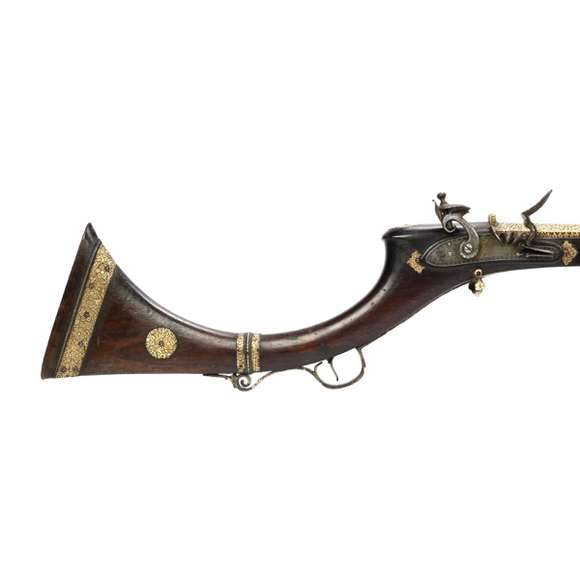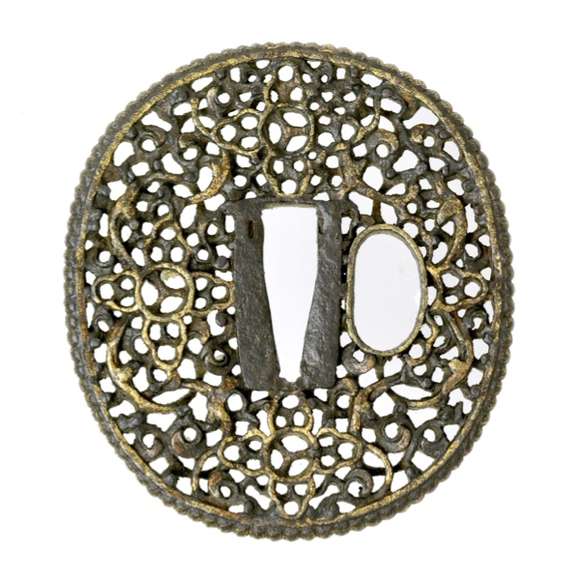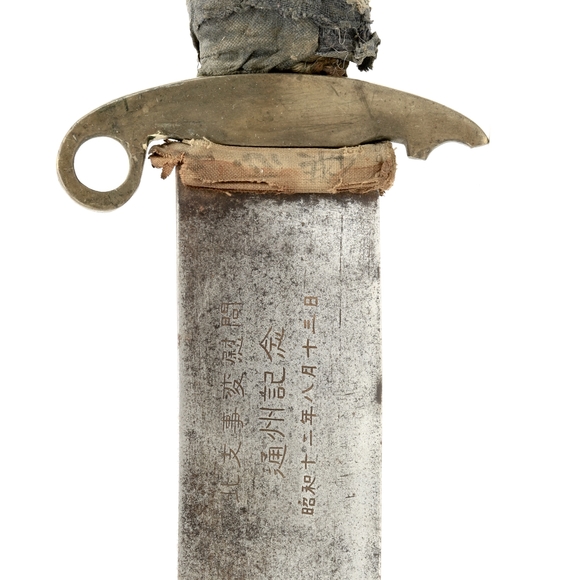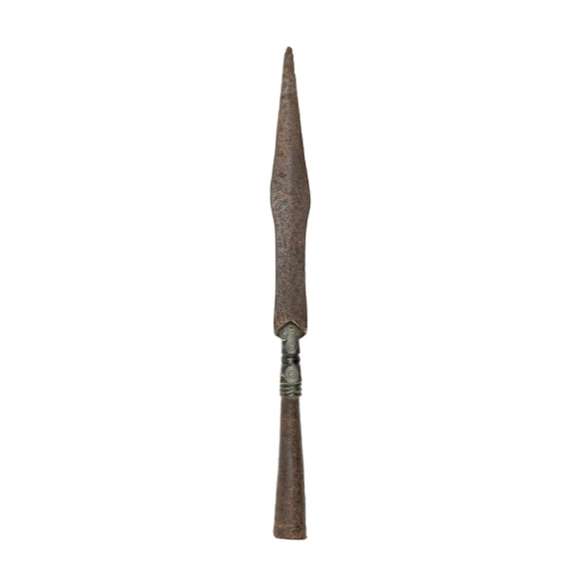Language: Chinese
Source: Classical literature
Description
Niǎoqiāng (鳥鎗) literally means "bird gun" and the term is therefore often erroneously translated as "fowling piece". Standard Qing military regulations, however, tell us that the niǎoqiāng was the standard type of musket in use by the Qing military and thus could not be exclusively for fowling.
These are of course not fowling-pieces. The word niǎo, for bird, simply refers to the pecking motion of the serpentine as it comes down to deliver the match in the priming pan to ignite the charge. This was an advancement over the touchholes of some earlier types of Chinese firearms that were more like small hand-held cannon.
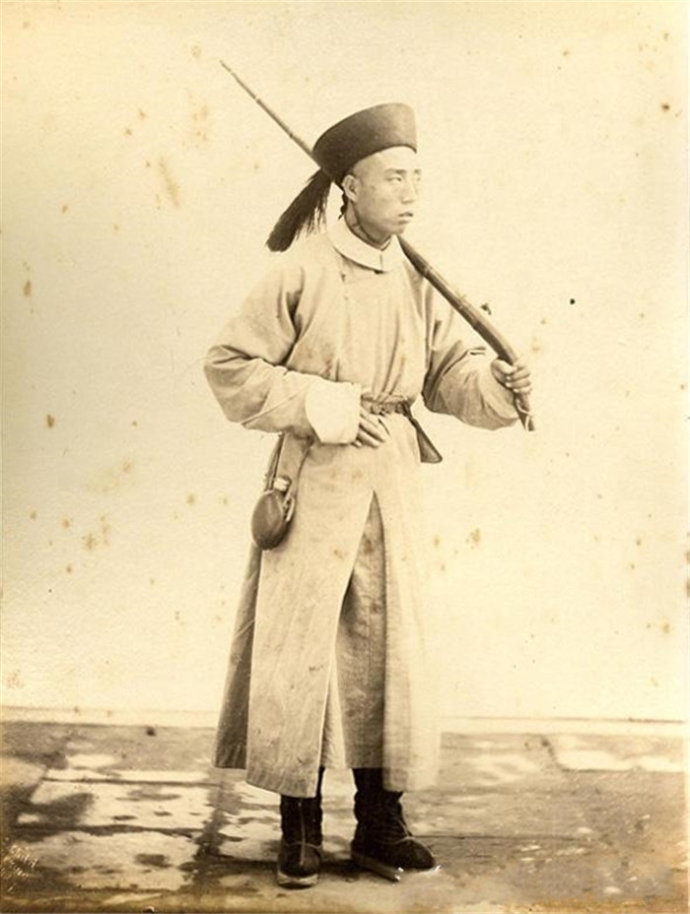
Musketeer described as being part of the Qing imperial guard.
Photo by Thomas Child, late 19th century.

A Manchu Soldier with his matchlock. Photo by Thomas Child.
Credit: Wellcome Collection. CC BY
Varieties
The Chinese matchlock came in two main varieties: The Indo-Portuguese spring loaded type and the central Asian type with pivoting serpentine, the latter was often equipped with a foldable bipod like the Tibetan matchlock, me mda'.

A Chinese matchlock musket with snapping Indo-Portuguese mechanism.
Sold by Mandarin Mansion in 2016.

A Chinese matchlock musket of the Central Asian type, with simple pivoting serpentine.
Sold by Mandarin Mansion in 2016.
In related languages
The Wuti Qingwen Jian, a late 18th-century five-language dictionary, lists various names for the matchlock musket in the main languages of the Qing empire.1
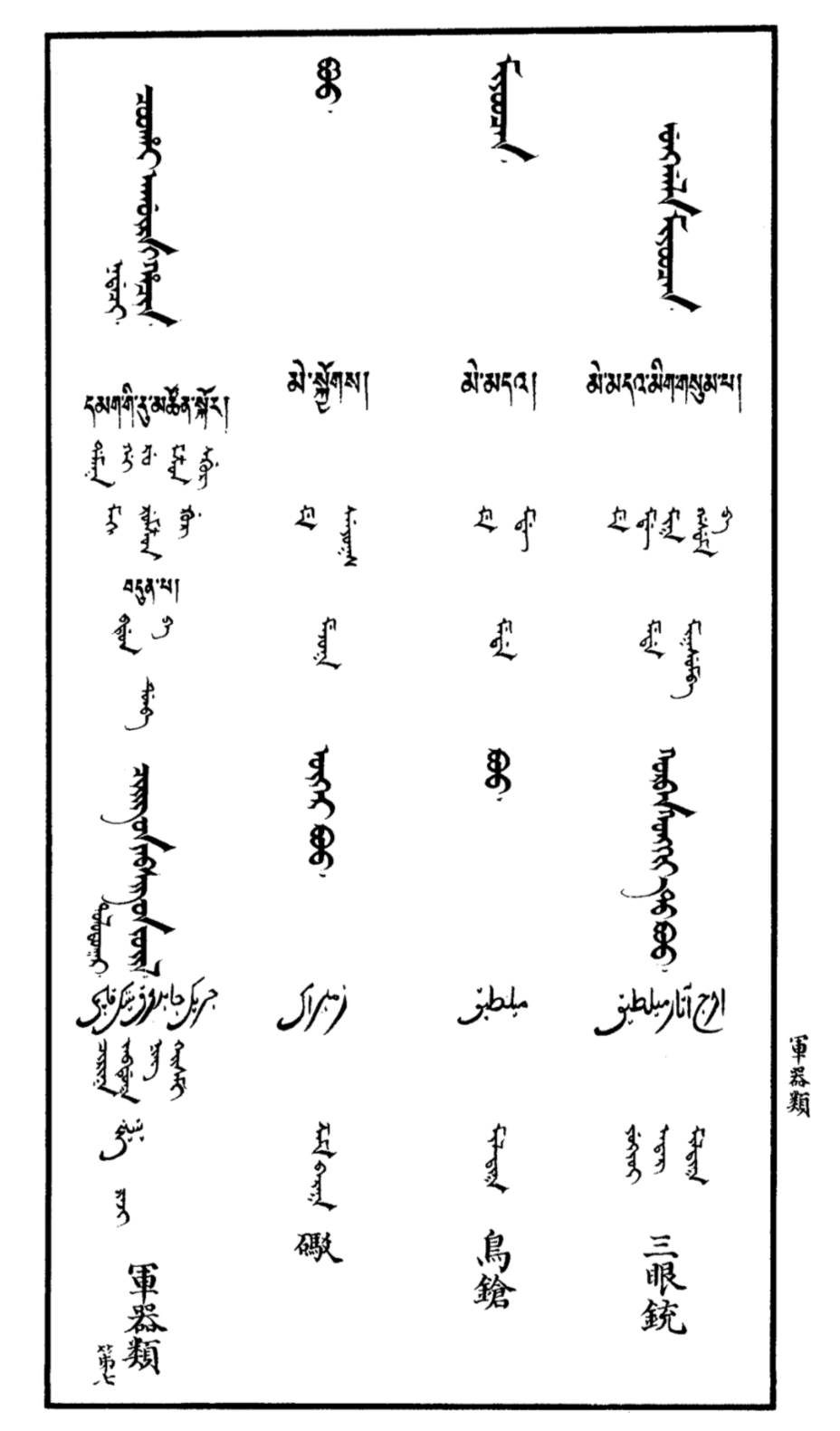
Relevant page of the Wuti Qingwen Jian. The musket entry is the third column from the left.
From top to bottom:
Manchu: Miyoocan
Tibetan: Me-mda
Mongolian: P'uu
Uygur: Mīltīq
Chinese: Niǎoqiāng (鳥鎗)
Notes
1. Wuti qingwen jian (五體清文鑒) or "Five Language Compendium" of 1790.

